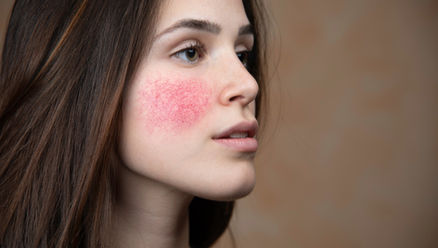If you’ve ever experienced facial flushing, you may be wondering if you have rosacea. Fortunately, Danielle LeClair, dermatology NP at Clear Skin For You can provide a rosacea diagnosis and safe and effective rosacea treatment options in Ellicott City MD to help decrease rosacea flares and achieve a more even complexion. How Do I Know If
Introduction: Skin cancer is a prevalent form of cancer that develops when abnormal skin cells grow uncontrollably. While various factors contribute to its development, understanding the underlying causes is crucial for prevention and early detection. Ultraviolet (UV) Radiation: Exposure to UV radiation from the sun or tanning beds is the primary risk factor for skin
It's important to note that while these treatments can effectively remove skin tags, they may not prevent new ones from forming. Additionally, it's advisable to consult a dermatologist before attempting any treatment, especially for larger or more complex skin tags, to ensure proper diagnosis and management.
In conclusion, congenital nevi are common birthmarks that vary in size, appearance, and potential risks. While most are harmless, larger lesions warrant careful monitoring and consideration of management options to mitigate potential complications. Collaboration with dermatological professionals ensures optimal care and skin health.
In conclusion, understanding common nevi is vital for maintaining optimal skin health. While typically benign, vigilant monitoring and timely evaluation are essential to detect any changes suggestive of malignancy. Collaboration with dermatological professionals ensures appropriate management and enhances overall skin wellness.
Moles, medically known as nevi, are common skin growths composed of clusters of melanocytes, the pigment-producing cells of the skin. While most moles are harmless, some may warrant treatment due to cosmetic concerns or suspicion of malignancy. Dermatologists specialize in the diagnosis and treatment of various skin conditions, including moles, offering a range of options
Broken blood vessels, also known as telangiectasia, are a common characteristic of rosacea, particularly in its advanced stages. These broken blood vessels are tiny capillaries that become dilated and visible beneath the skin’s surface. While the precise mechanism behind their development in rosacea isn’t fully understood, several factors contribute to their formation: While broken blood
Swelling and thickening of the skin can occur due to various underlying conditions, and the specific characteristics may differ depending on the cause. Here are some common conditions associated with swelling and thickening of the skin: Treatment for swelling and thickening of the skin depends on the underlying cause and may include medications, topical treatments,




